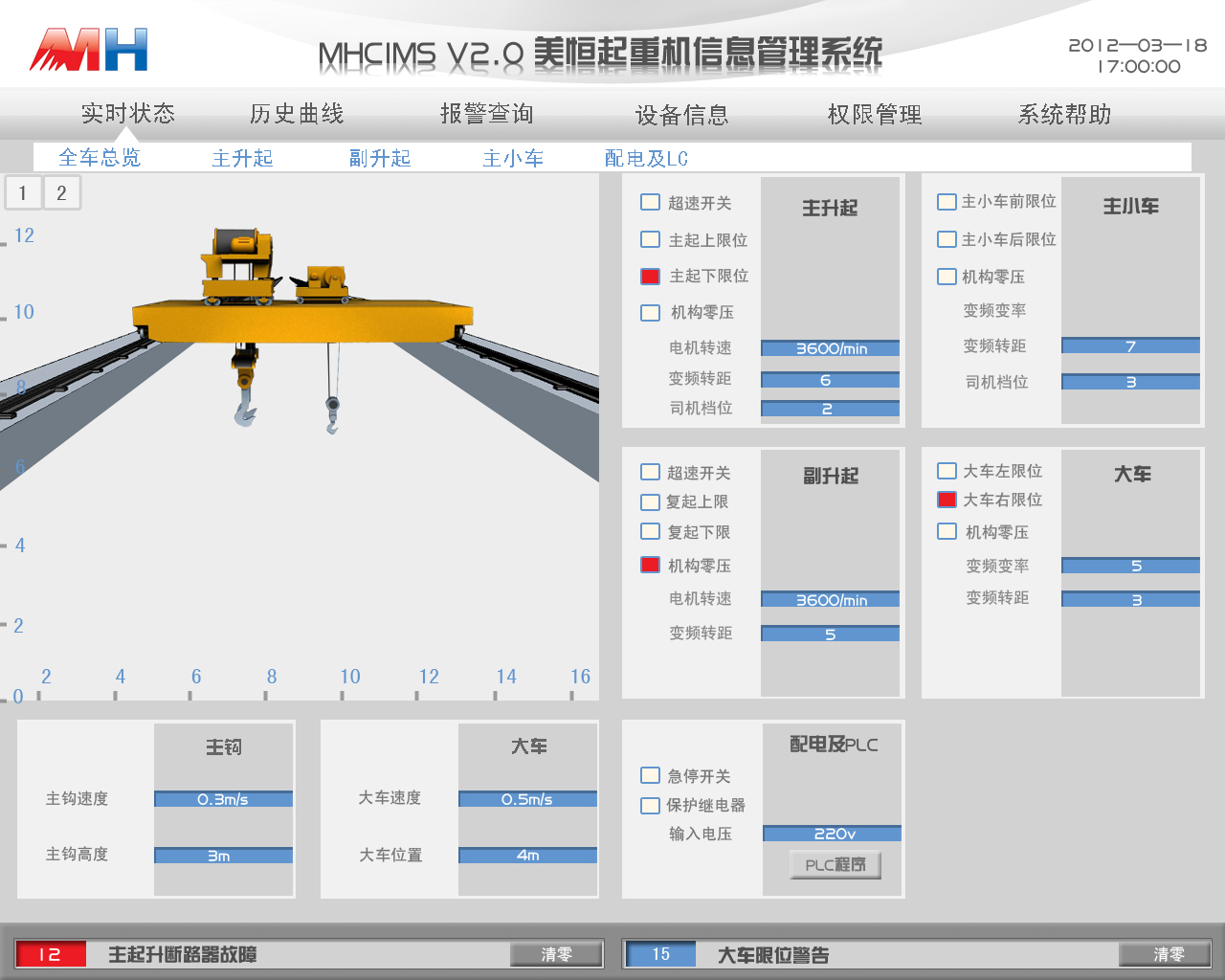
All categories


Intelligent hoisting solutions for the metallurgical industry

Case background
Foundry cranes are used to transport high temperature molten steel and form an important part of the production management for a well-known domestic Chinese large-scale iron and steel metallurgical enterprise. The facility runs 24hour production and in order to ensure the safe transportation of high temperature molten steel the factory has introduced the MH - SCADA system to monitor, control and improve the safe operation of the foundry crane in addition the system also reduces the maintenance time of the foundry crane and cost of spare parts.
Case Analysis
The steel mills have 6 foundry cranes, including 3 that are used for the blast furnace area which smelts the molten iron into steel; the other 3 are used in the steel injection molding machine area that converts molten steel into usable product.
Each crane uses the MH –PLC 300S Programmable Logic Controller used to control the THYROMAT device and MVCAN frequency converter to drive the lift motor. That is used to lift and lower the steel ladle and completes the dumping action. Communication between the PLC and the frequency converter is done using the well-known and reliable Profibus-DP protocol.
Each crane has been fitted with a local monitoring terminal, used to give the operator a real-time view of the crane's running status as well as to help the crane maintenance staff quickly identifies any problems with the crane as assist with the daily maintenance and inspection work required to ensure safe and reliable operation. In the central control room there is a terminal can view all six cranes in real-time. There are more than 2000 I/O monitoring points and offers the production and maintenance management teams an overview of all the operation of the cranes.

The crane states change quickly and in order to guarantee the safe running of the crane the whole system collects the information of crane high-speed operation. This is done using the MH-SCADA special high-speed data acquisition communications driver designed to ensure reliable and fast data acquisition in order to ensure data is accessed and logged at 100ms. To give the MH-SCADA and crane management system this data is all logged at high speed into a database. This data can then be viewed in a high-resolution historical trend curve. This allows on-site maintenance personnel to accurately grasp the crane operation information, so as to quickly find faults or what the root causes of any problems are.
The built-in alarm management module records, analyses and reports on all alarms from each crane. This assists the maintenance engineers to identify and reduce fault maintenance times leading to a more pro-active maintenance ability, improving availability and therefore production efficiency as down-time is shortened.
MH - SCADA stores crane operation data into the database, and helps maintenance personnel to conveniently grasp the crane operation cycles, for example which parts are taking greater load, which parts are running for a longer times and therefore aging more quickly that may lead to early failure. Equipment management personnel can then better plan the management of spare parts and components minimizing the stock and ensuring the availability that in in-turn reduces potential downtime.
MH-SCADA uses Windows security mechanism to assign permissions. Different permissions allocated to different roles based users, this ensures the safety of the field data and records, and ensures the effectiveness of the production data. PLC programming procedures are set higher security permissions which on the one hand are convenient for field engineers familiar with the PLC program. This allows the engineers to easily monitor the program for system analysis and testing but ensures that unauthorized personnel cannot modify the program thus ensuring safe operation of the equipment.
User Benefits
The MH-SCADA successfully controls the crane, minimizing failure times and increasing the average trouble-free crane running time, decreasing unplanned downtime, improving operation efficiency. It also improves the safety of the crane and thereby the safety of the lives of the field staff.

Web Copyright:DALIAN MH ELECTRIC LTD. 辽ICP备05006725号-2 Powerby:300.cn dalian







